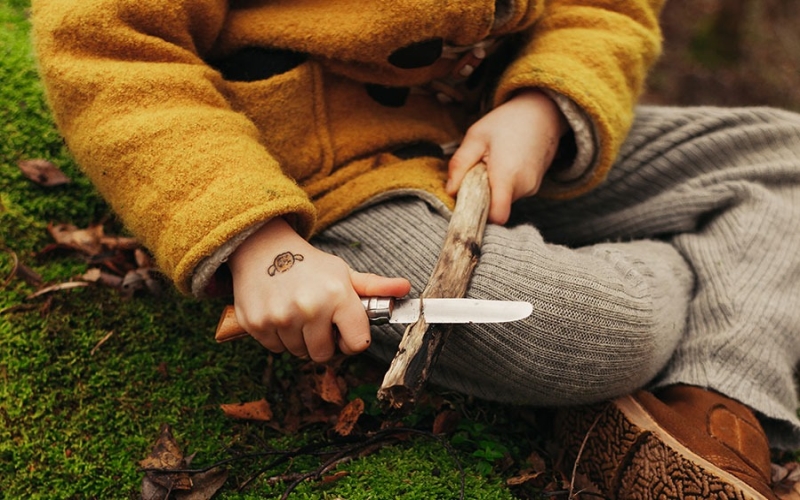A kukri knife is more than just a blade; it’s a symbol of tradition and sheer craftsmanship. Originating from Nepal, this iconic knife boasts a distinct inwardly curved blade that sets it apart. It is also known as khukuri or khukri. Its history is deeply rooted in Nepalese culture and military heritage.
The kukri knife’s history dates back centuries, tracing its roots to the Gurkhas. Gurkhas were the famed warriors known for their fearlessness and combat skills. The Damascus kukri knife was initially crafted for utility purposes like chopping wood or hunting. However, it soon evolved into a formidable weapon on the battlefield. Its unique shape and sharpness made it a fearsome tool for skilled fighters.
These knives have many uses beyond combat, proving invaluable in daily life. From cutting meat and vegetables to being a trusted tool for outdoor enthusiasts, the kukri’s design lends itself to various tasks.
BhojPure Kukri
The BhojPure Kukri traces its origins to the Bhojpur region in Nepal. With a blade length typically 12 to 15 inches, this kukri boasts a broader and heavier blade than other designs. The handle of the BhojPure Kukri is commonly made from sturdy materials such as hardwood, buffalo horn, or sometimes metal for added strength and grip.
The BhojPure was primarily crafted for military purposes. It was a formidable combat weapon due to its robust build and powerful chopping capability. Beyond military use, the BhojPure Kukri is a practical tool for outdoor activities like bushcraft, survival situations, and heavy-duty tasks. Interestingly, this knife was mostly used by Nepalese people during festivals for sacrificial rituals. But, it became famous for most villagers and farmers as an everyday carry knife.
Chaaklo
The Chaaklo kukri hails from Eastern Nepal and is known for its distinctive blade. It measures 15 to 18 inches in length, with a significant curve that slopes downwards near the tip. The blade’s width is approximately 2 to 3 inches at its widest point. Handle material for the Chaaklo kukri traditionally includes wood sourced from the local forests, offering durability and a comfortable grip.
One of the notable features of the Chaaklo is its reinforced spine, which provides added strength and durability to the blade, making it suitable for heavier tasks. It is used for various tasks, ranging from agricultural work to combat.
Sirupate Knife
Next, there is the Sirupate kukri, hailing from Eastern Nepal. Interestingly, this knife is named after the Sirupate peak of the Himalayas. Its blade typically ranges from 12 to 16 inches long, with a leaf-shaped design that narrows towards the tip. Crafted from high-carbon steel, the edge showcases a distinct curvature for chopping and slicing.
The handle of the Sirupate Kukri is commonly made from materials like hardwood or water buffalo horn. It is ergonomically shaped to provide a secure grip and enhanced control during use. The Sirupate is slim in shape compared to other kukri designs, but that doesn’t affect its quality. It is used for agricultural work, such as cutting vegetation. It serves as a dependable weapon for self-defense and combat.
Domestic ChainPure Kukri
The ChainPure Kukri, originating from rural Nepal, derives its name from the local village “Chainpur,” where these blades are meticulously crafted. These domestic kukris typically have a blade length ranging between 10 to 12 inches, showcasing a slightly thicker spine than other traditional kukris. The ChainPure kukri is also called a domestic kukri as it was crafted to perform household tasks.
One distinguishing characteristic of the ChainPure is its handle design. The regular metallic bolster is discarded and replaced by an ace-shaped keeper to secure the tang at the butt section. Fine contours of the handle provide easy and stronghold.
Compact Mini Kukri
The kukri designs we have discussed have remarkable attributes. Yet, their weight and blade size might make them difficult to carry for some people. Therefore, we have added the compact mini kukri to our list. Characterized by a smaller blade size and reduced weight, this design offers convenience for everyday carry or outdoor activities. Its compact nature makes it a versatile tool for camping, hiking, or simple household tasks. Despite its smaller stature, the mini kukri maintains the signature blade curvature, ensuring reliable performance in a more manageable package. It has a blade size of about 5 to 7 inches. In some designs, there is a folding option, meaning you could easily fold your blade to make it even more compact.
Now, don’t be overwhelmed by the number of designs of a kukri knife. When selecting the ideal kukri, consider your intended usage—whether it’s for outdoor adventures, collection, or practical tasks. Pay special attention to the blade’s material, thickness, and curvature to see if it matches your needs. Ensure the handle provides a comfortable grip, and test the kukri’s balance and weight if possible. Authenticity matters, so purchase from reputable sources or stores. You can try an online store, but make sure it has good reviews.
Lastly, remember that a well-chosen kukri becomes a reliable companion for your adventures.


